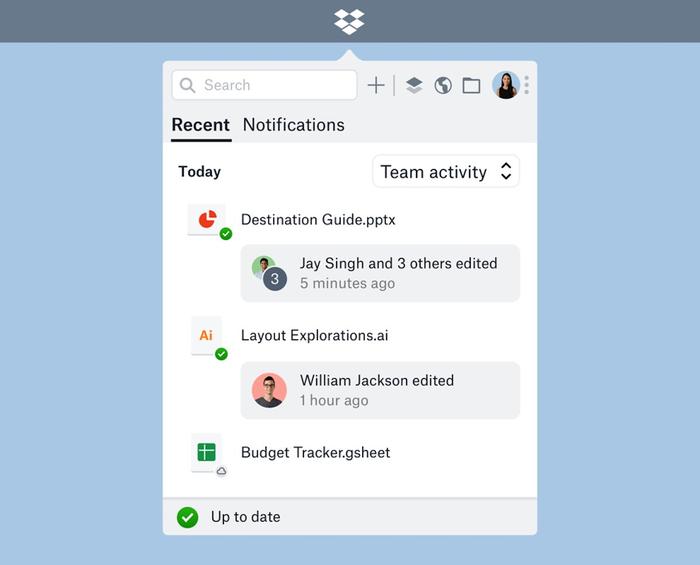Dropbox has given its file-sharing software a major overhaul in an effort to reposition itself as a hub for workplace collaboration and productivity.
The company's aim is to combine various fragmented digital workplace tools into one place. "It's a single workspace to organise your content, connect your tools, and bring everyone together, wherever you are," the company said in a blog post Monday.
Three main components of the new Dropbox app aim to achieve this goal.
First, it combines documents from a range of sources, including Google Docs, Sheets and Slides and Microsoft Office files, making them accessible in one place. Users can create, organise and share content direct from Dropbox, the company said, while bookmark shortcuts for webpages and other SaaS tools can also be stored. There is also an improved search interface to find documents.
Second, integrations with collaboration and communication tools, including Slack and Zoom, make it easier to chat with co-workers about work under way without leaving Dropbox.
And finally, the new app will help users coordinate digital work. This means incorporating lightweight project management capabilities such as to-do lists to help keep track of work underway, @mentions to assign work, and the ability to pin documents in project-specific folders. It is also possible to check progress on shared files with a new team activity feed.
The new features, which will be available online and in Dropbox's desktop app, come at no extra charge on all Dropbox plans, including the free tier. Users can opt in to an early access program here.
 Credit: Dropbox
Credit: Dropbox Dropbox has more than 13 million paying customers, according to its latest financial results, with revenues of $385.6 million during the first quarter of 2019.
Collaboration: a 'natural evolution' for Dropbox
The revamped software marks the latest step in the company's evolution from a cloud file storage platform to a collaboration business, as evidenced by other product launches such as content collaboration tool Dropbox Paper in 2015.
"This is a significant change for Dropbox that further positions it as a collaboration player," said Raúl Castañón-Martínez, a senior analyst at 451 Research. "Dropbox has naturally gravitated to collaboration; this is how users instinctively use it, as a repository where collaboration workflows start. The redesign however, makes it official: Dropbox is staking a claim as a destination where work gets done."
The new desktop app seems like a "natural evolution" for the company, said Larry Cannell, a research director at Gartner.
"Documents are a core focus of many teams' online collaboration," he said. "However, teams need more than documents. They also track tasks, share feedback and need to keep tabs on what others are doing."
The revamped Dropbox app essentially extends a shared folder beyond just holding files and into providing a more extensive collaborative workspace, Cannell said. "Documents are still the core experience, but these other supporting elements are easily accessible."
 Credit: Dropbox
Credit: Dropbox Dropbox is not the only software vendor that wants to serve as a digital workplace hub, with various vendors staking a claim. In Dropbox's case, this means taking a document-centric approach.
Content is one of the core elements of team collaboration, along with conversations and coordination, said Cannell, and a range of products have evolved to meet the needs of each of these areas. Slack and Microsoft Teams centre around conversations, while Dropbox, Box, OneDrive, G-Drive focus on content. The likes of Asana, Trello and Monday are tailored to work coordination.
"All teams need a combination of these three core elements," said Cannell.
Of course, as well as integrating with each other, many of those companies offer overlapping features, meaning that the boundaries between different categories of collaboration are frequently shifting.
The result is a variety of choices now for enterprise users.
"Every vendor wants to be the collaboration hub," said Cannell. "Teams should focus on which of these elements are most important to them (as well as what they have available in their enterprise) to determine where to start and what should be their 'hub.'"

